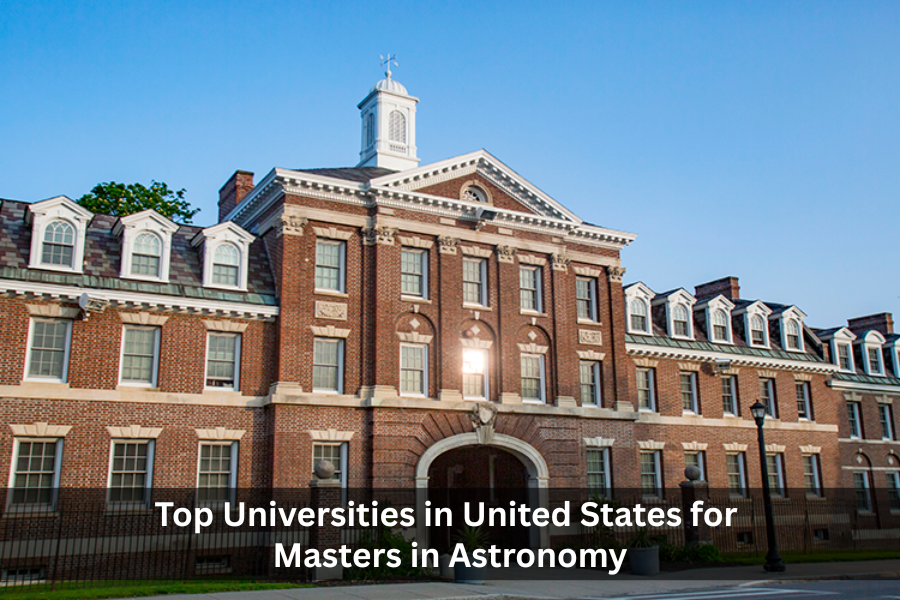
United States is a top choice for MS in Astronomy applicants, offering renowned universities, diverse campuses, and excellent post-study work options. Its high quality of life and career opportunities make it an ideal study destination.
Here is the list of 5 Best MS in Astronomy Universities in United States along with details of their course duration, fee, eligibility requirements and more:
1. Rensselaer Polytechnic Institute (United States)
Rensselaer Polytechnic Institute (RPI) is a private research university in Troy, New York, with additional campuses in Hartford and Groton, Connecticut. It was established in 1824 by Stephen van Rensselaer and Amos Eaton for the “application of science to the common purposes of life” and is the oldest technological university in the English-speaking world and the Western Hemisphere. Numerous American colleges or departments of applied sciences were modeled after Rensselaer.
MS in Astronomy at Rensselaer Polytechnic Institute, offered by the School of Science, is a 1-year STEM-designated program with a tuition fee of USD 68,500 for both domestic and international students, and estimated living expenses of USD 23,100.
2. San Diego State University (United States)
San Diego State University (SDSU) is a public research university in San Diego, California. Founded in 1897 as San Diego Normal School, it is the third-oldest university and southernmost in the 23-member California State University (CSU) system. SDSU has a fall 2020 student body of 35,578 and an alumni base of more than 300,000.
MS in Astronomy at San Diego State University, offered by the College of Sciences, is a 1-year STEM-designated program with a tuition fee of USD 10,200 for domestic students and USD 16,500 for international students, and estimated living expenses of USD 20,000.
3. Wesleyan University (United States)
Wesleyan University is a private liberal arts university in Middletown, Connecticut. Founded in 1831 as a men’s college under the auspices of the Methodist Episcopal Church and with the support of prominent residents of Middletown, the college was the first institution of higher education to be named after John Wesley, the founder of Methodism. It is now a secular institution.
MA in Astronomy at Wesleyan University (United States) is a STEM-designated program; further details such as duration, tuition fee, and living expenses were not provided.
4. University of Florida (United States)
The University of Florida is a public land-grant research university in Gainesville, Florida. It is a senior member of the State University System of Florida and traces its origins to 1853 and has operated continuously on its Gainesville campus since September 1906. The university is accredited by the Southern Association of Colleges and Schools (SACS). It is the third-largest Florida university by student population and is the fifth-largest single-campus university in the United States with 57,841 students enrolled during the 2020–21 school year. The University of Florida is home to 16 academic colleges and more than 150 research centers and institutes.
MS in Astronomy at the University of Florida, offered by the College of Liberal Arts & Sciences, is a 2-year STEM-designated program with a tuition fee of USD 12,800 for domestic students and USD 30,100 for international students, and estimated living expenses of USD 23,200.
5. University of Hawai’i at Manoa (United States)
The University of Hawaiʻi at Mānoa (University of Hawaii—Mānoa, U.H. Mānoa, and formally known as the University of Hawai’i, or simply UH) is a public land-grant research university in Mānoa, a neighborhood in Honolulu, Hawaii, United States. It is the flagship campus of the University of Hawai’i system and houses the main offices of the system. Most of the campus occupies the eastern half of the mouth of Mānoa Valley, with the John A. Burns School of Medicine located adjacent to the Kakaʻako Waterfront Park.
MS in Astronomy at the University of Hawai‘i at Manoa, offered by the College of Natural Sciences, is a 2-year STEM-designated program with a tuition fee of USD 9,800 for domestic students and USD 21,000 for international students, and estimated living expenses of USD 20,100.
If you’re planning to study in United States, check out our comprehensive guide covering everything you need to know from top universities and popular programs to career prospects, tuition fees, cost of living, scholarships, visas, and more.
If you’re planning to study in United States, check out our comprehensive guide covering everything you need to know from top universities and popular programs to career prospects, tuition fees, cost of living, scholarships, visas, and more.
 |
 |
 |
 |
 |
 |
 |
 |
